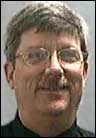When Genesis Health System, in Davenport, Iowa, took part in a March 2009 disaster drill involving multiple agencies, several hospitals and approximately 50 actors playing the part of victims requiring emergency health care, the hospital was able to put its new active RFID solution to the test. In September 2008, Genesis had begun applying AeroScout tags that transmit to the hospital’s existing Cisco Wi-Fi nodes at two of its four campuses. Shortly before the disaster drill took place, Genesis had finished tagging most of its infusion pumps, as well as wheelchairs and stretchers.
The drill included a surprise change when the injured were abruptly rerouted from one facility to another, thus requiring a quick change in medical equipment deployment by Genesis. However, says Steve Montgomery, the hospital’s supervisor of logistics, by using RFID, Genesis was fully prepared with the proper equipment at the right location, waiting and ready when the “injured” arrived. Drills such as this are scheduled every six months.
The hospital installed the AeroScout system to better track assets as they passed through its clinicians’ hands, as well as in its sterilization and biomedical departments. Montgomery says he sought a solution that would allow him to locate rented pumps and return them on time, know where the hospital’s own pumps are, and recognize when there is a bottleneck that could cause an equipment shortage. Currently, he says, it takes a maximum of two minute’s searching via computer, on average, to locate a missing piece of equipment. Prior to using the AeroScout system, it took about 22 minutes to carry out that same task.
The asset tracking and management system includes AeroScout battery-powered T2 2.4 GHz tags, as well as the company’s MobileView software to display the location of equipment in real time and enable Montgomery to set up a series of reports to be run daily regarding the flow of assets through the hospital. The two campuses at which the system is currently installed have a combined total of 500 beds. A third campus, with 75 beds, will go online in June 2010, Montgomery says, while a fourth, with 12 beds, still requires that the Wi-Fi infrastructure be installed before it can be included in the system.
At the first two campuses, the system employs the hospital’s existing Wi-Fi infrastructure, which was installed for its communications system, while AeroScout added Wi-Fi nodes in places where the network had not previously been required, such as in basements. Exciters are used in areas where Genesis needs to know the exact number of tagged items in a specific location, such as on a shelf. An exciter emits a 125 kHz signal that activates a dormant tag, causing it to transmit its own unique ID number, along with the exciter’s ID number, to the Wi-Fi nodes. That information is then sent to the MobileView software. This kind of granularity is provided in the biomedical department and other places where equipment may pile up, says Joel Cook, AeroScout’s health-care solutions marketing director.
The 700 items Genesis is tracking include several bariatric wheelchairs (heavy-duty models designed for large patients), stretchers and powered air-purifying respirators. The MobileView software is designed to provide Genesis with building-, campus- and enterprise-level maps of the facilities, with icons representing any items the user requests. It also enables the hospital’s management to track the movement of equipment over the past 24 hours.
Each morning, Montgomery says, the MobileView software generates between 16 and 18 reports detailing such information as the assets’ location at that time, as well as when the equipment has been stalled at a particular location, and when the best time would be to move equipment from one location to another. He can also utilize the software to ascertain the whereabouts of equipment, and thereby redeploy those assets based on the number and type of surgeries scheduled for that day. While that kind of task initially would have required several hours of walking through two facilities to determine which equipment was in which location, Montgomery says he can now obtain that kind of information from his desktop computer.
Initially, the hospital began using AeroScout’s T3 tags, which come with programmable buttons and tamper alerts. The hospital found those features were not necessary, however, and has since swapped those tags for AeroScout’s cheaper T2 tags, which lack such features. In the future, Montgomery indicates, he would like to utilize passive tags on lower-value items with RFID readers at doorways, in order to track when equipment leaves the hospital, thereby enabling hospital management to know when an item needs to be replaced, as well as track when a particular item was removed from the facility and correlate that removal with who took that piece of equipment, based on video footage. “Not necessarily for disciplinary action,” he states, “but for corrective measures.”
According to Montgomery, the hospital currently has the AeroScout tags set to beacon every few seconds, though it may reduce that beacon rate in the future, to increase the life of the tags’ batteries. “As we were heading in, we were enamored with the idea of watching an IV pump walk down the hallway,” he says. “That’s really neat, but it’s not needed, and we might slow down the beacon rate in the future.”
Thus far, Montgomery says, the system has been user-friendly, and he can set up reports as he chooses. “I’m really excited about the system,” he says, noting that although the return on investment can not be quantified, the improvement in patient care as a result of having the right equipment available where and when it is needed has made the system worthwhile.


